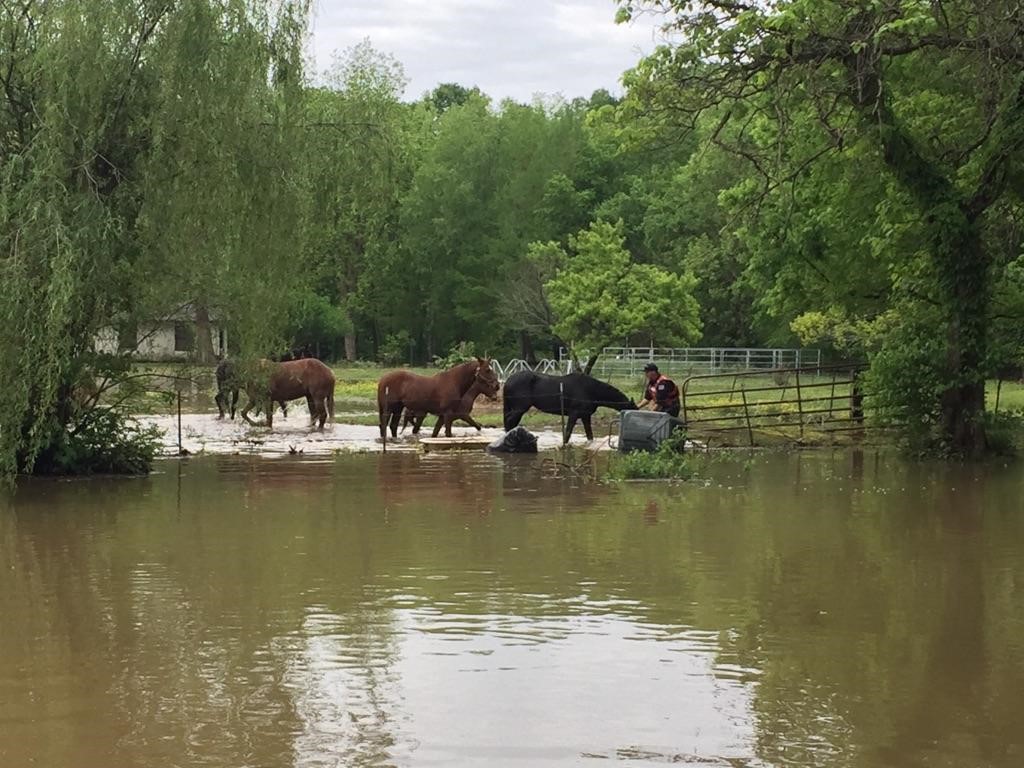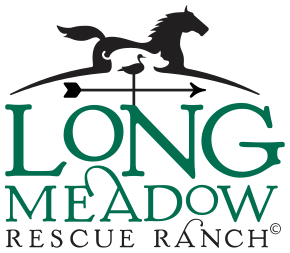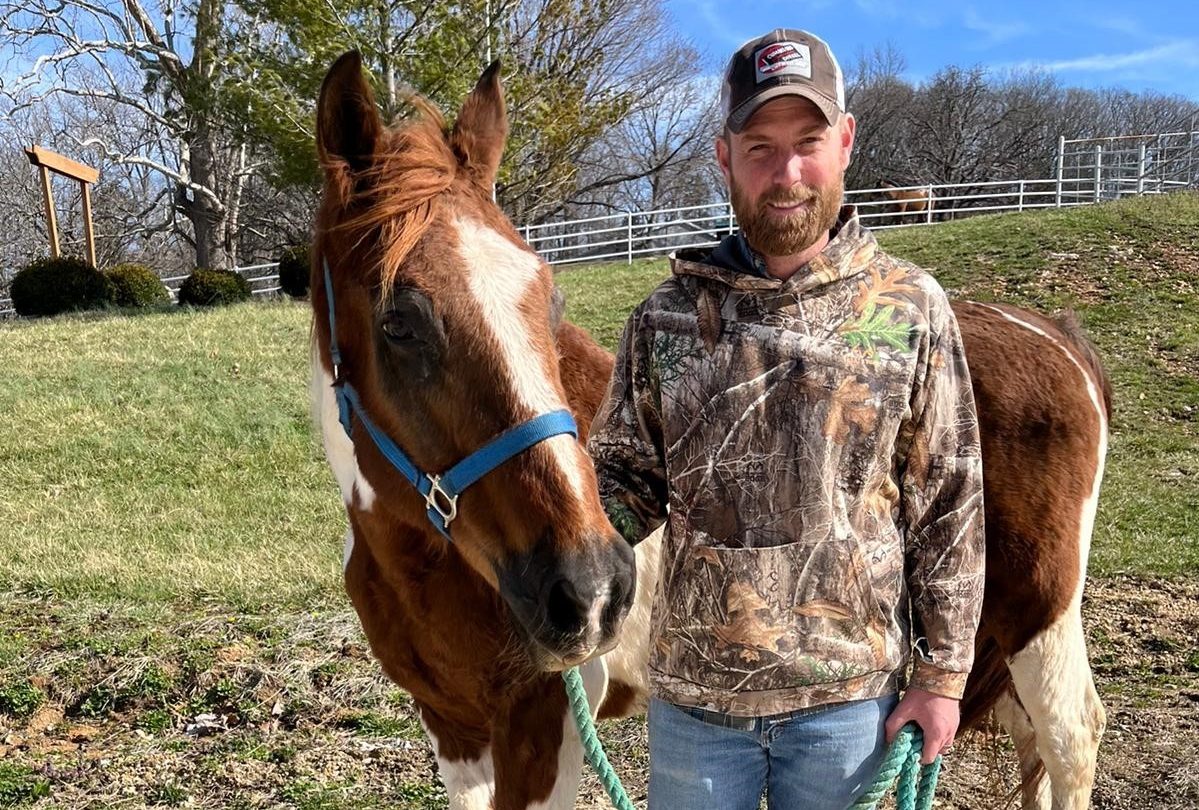
Keep your animals safe during a disaster!

For Horses
Disaster preparedness is important for all animals, but it takes extra consideration for horses because of their size and the requirements for transporting them. If you think that disasters happen only if you live in a floodplain, near an earthquake fault line, or in a coastal area, you may be tragically mistaken. Disasters can happen anywhere and include barn fires, hazardous materials spills, propane line explosions, and train derailments, all of which may necessitate evacuation. It is imperative that you are prepared to move your horses to a safe area.
During an emergency, the time you have to evacuate your horses will be limited. With an effective emergency plan, you may have enough time to move your horses to safety. If you are unprepared or wait until the last minute to evacuate, you could be told by emergency management officials that you must leave your horses behind. Once you leave your property, you have no way of knowing how long you will be kept out of the area. If left behind, your horses could be unattended for days without care, food, or water. To help you avoid this situation, we have prepared information and suggestions to help you plan for emergencies.
- Make arrangements in advance to have your horse trailered in case of an emergency. If you do not have your own trailer or do not have enough trailer space for all of your horses, be sure you have several people on standby to help evacuate your horses.
- Know where you can take your horses in an emergency evacuation. Make arrangements with a friend or another horse owner to stable your horses if needed. Contact your local animal care and control agency, agricultural extension agent, or local emergency management authorities for information about shelters in your area.
- Inform friends and neighbors of your evacuation plans. Post detailed instructions in several places – including the barn office or tack room, the horse trailer, and barn entrances – to ensure they are accessible to emergency workers in case you are not able to evacuate your horses yourself.
- Place your horses’ Coggins tests, veterinary papers, identification photographs, and vital information – such as medical history, allergies, and emergency telephone numbers (veterinarian, family members, etc.) – in a watertight envelope. Store the envelope with your other important papers in a safe place that can be quickly reached.
- Keep halters ready for your horses. Each halter should include the following information: the horse’s name, your name, your telephone number, and another emergency telephone number where someone can be reached.
- Prepare a basic first aid kit that is portable and easily accessible.
- Be sure to have on hand a supply of water, hay, feed, and medications for several days for each horse you are evacuating.
- It is very important that your horses are comfortable being loaded onto a trailer. If your horses are unaccustomed to being loaded onto a trailer, practice the procedure so they become used to it.
- There may be times when taking your horses with you is impossible during an emergency. Consider different types of disasters and whether your horses would be better off in a barn or loose in a field.
For Livestock
- Evacuate animals as soon as possible. Be ready to leave once the evacuation is ordered. In a slowly evolving disaster, such as a hurricane, leave no later than 72 hours before anticipated landfall, especially if you will be hauling a high-profile trailer such as a horse trailer. Remember: Even a fire truck fully loaded with water is considered “out of service” in winds exceeding 40 mph. If there are already high winds, it may not be possible to evacuate safely.
- Arrange for a place to shelter your animals. Plan ahead and work within your community to establish safe shelters for farm animals. Potential facilities include fairgrounds, other farms, racetracks, humane societies, convention centers, and any other safe and appropriate facilities you can find. Survey your community and potential host communities along your planned evacuation route.
- Contact your local emergency management authority and become familiar with at least two possible evacuation routes well in advance.
- Set up safe transportation. Trucks, trailers, and other vehicles suitable for transporting livestock (appropriate for transporting each specific type of animal) should be available, along with experienced handlers and drivers.
- Take all your disaster supplies with you or make sure they will be available at your
evacuation site. You should have or be able to readily obtain feed, water, veterinary supplies, handling equipment, tools, and generators if necessary. - If your animals are sheltered off your property, make sure that they remain in the groupings they are used to. Also, be sure they are securely contained and sheltered from the elements if necessary, whether in cages, fenced-in areas, or buildings.
- Current list of all animals, including their location and records of feeding, vaccinations, and tests. Make this information available at various locations on the farm. Make sure that you have proof of ownership for all animals.
- Supplies for temporary identification of your animals, such as plastic neckbands and permanent markers to label your animals with your name, address, and telephone number.
- Basic first aid kit.
- Handling equipment such as halters, cages, and appropriate tools for each kind of animal.
- Water, feed, and buckets.
- Tools and supplies needed for sanitation.
- Disaster equipment such as a cell phone, flashlights, portable radios, and batteries.
- Other safety and emergency items for your vehicles and trailers.
- Food, water, and disaster supplies for your family. Your local humane organization, agricultural extension agent, or local emergency management agency may be able to provide you with information about your community’s disaster response plans.
- No exotic (non-native) trees, which uproot easily
- No overhead power lines or poles
- No debris or sources of blowing debris
- No barbed wire fencing (woven wire fencing is best)
- Not less than one acre in size (if less than an acre, your livestock may not be able to avoid blowing debris).




